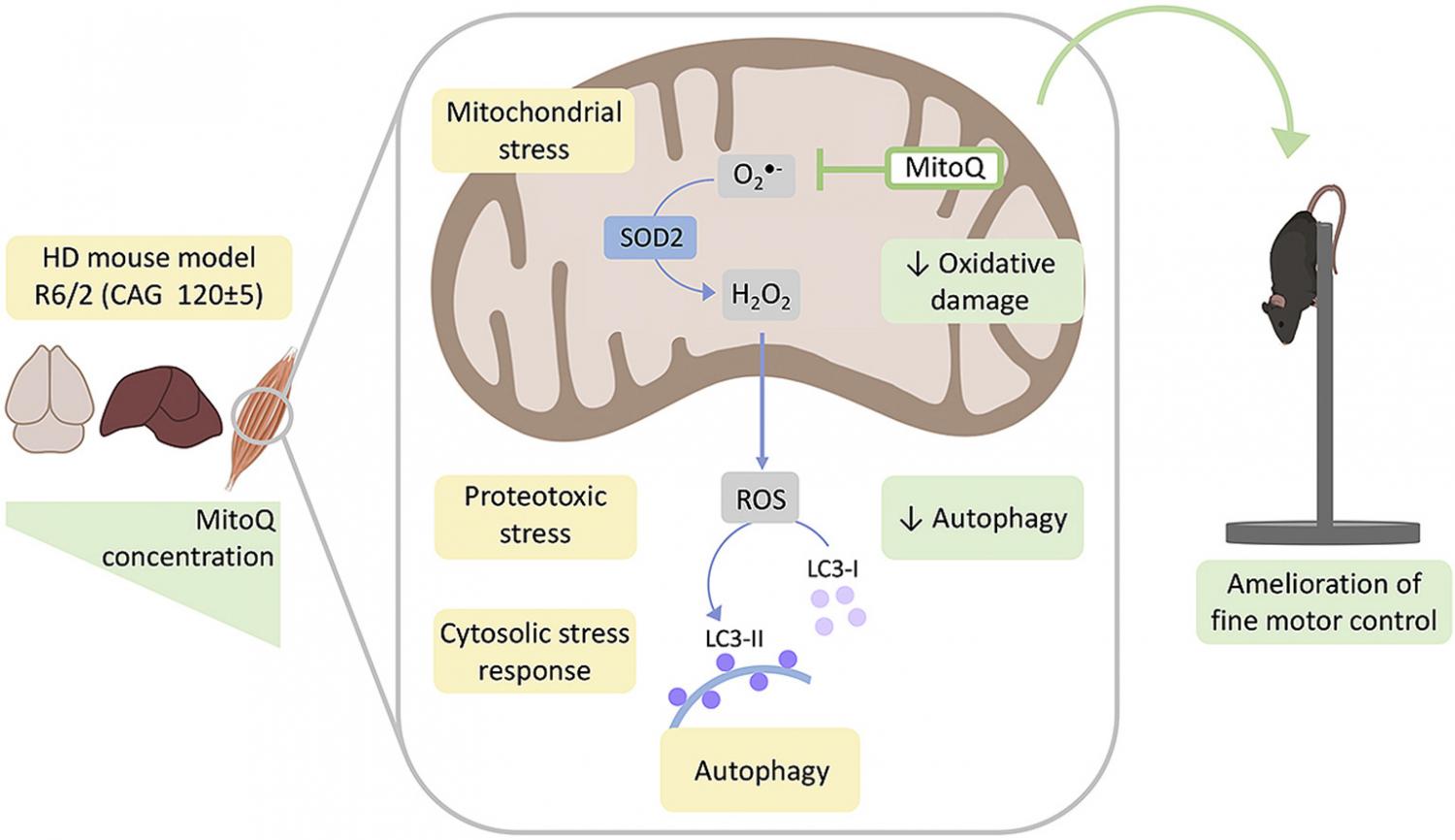
Abnormal protein homeostasis (proteostasis), dysfunctional mitochondria, and aberrant redox signalling are often associated in neurodegenerative disorders, such as Huntington's (HD), Alzheimer's and Parkinson's diseases. It remains incompletely understood, however, how changes in redox signalling affect proteostasis mechanisms, including protein degradation pathways and unfolded protein responses (UPR). Here we address this open question by investigating the interplay between redox signalling and proteostasis in a mouse model of HD, and by examining the in vivo effects of the mitochondria-targeted antioxidant MitoQ. We performed behavioural tests in wild-type and R6/2 HD mice, examined markers of oxidative stress, UPR activation, and the status of key protein degradation pathways in brain and peripheral tissues. We show that R6/2 mice present widespread markers of oxidative stress, with tissue-specific changes in proteostasis that were more pronounced in the brain and muscle than in the liver. R6/2 mice presented increased levels of cytosolic and mitochondrial chaperones, particularly in muscle, indicating UPR activation. Treatment with MitoQ significantly ameliorated fine motor control of R6/2 mice, and reduced markers of oxidative damage in muscle. Additionally, MitoQ attenuated overactive autophagy induction in the R6/2 muscle, which has been associated with muscle wasting. Treatment with MitoQ did not alter autophagy markers in the brain, in agreement with its low brain bioavailability, which limits the risk of impairing neuronal protein clearance mechanisms. This study supports the hypotheses that abnormal redox signalling in muscle contributes to altered proteostasis and motor impairment in HD, and that redox interventions can improve muscle performance, highlighting the importance of peripheral therapeutics in HD.
